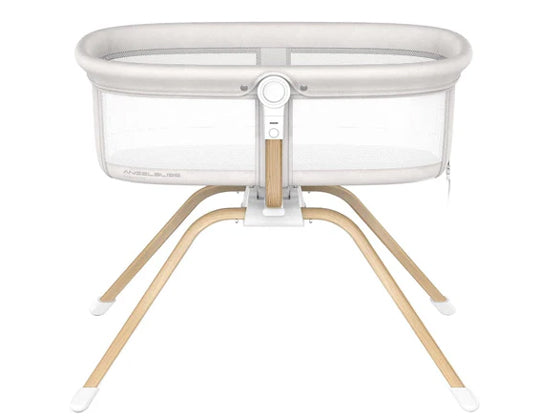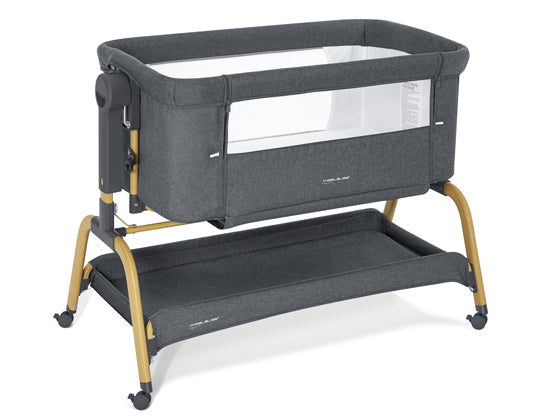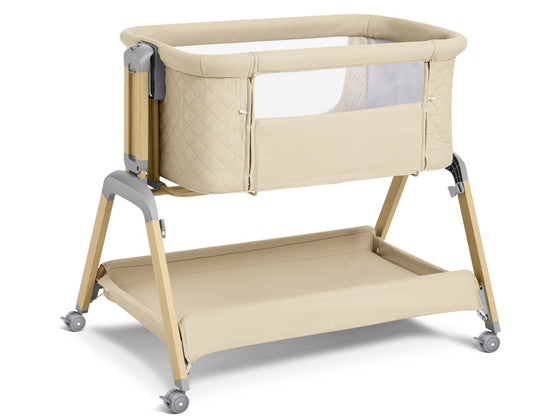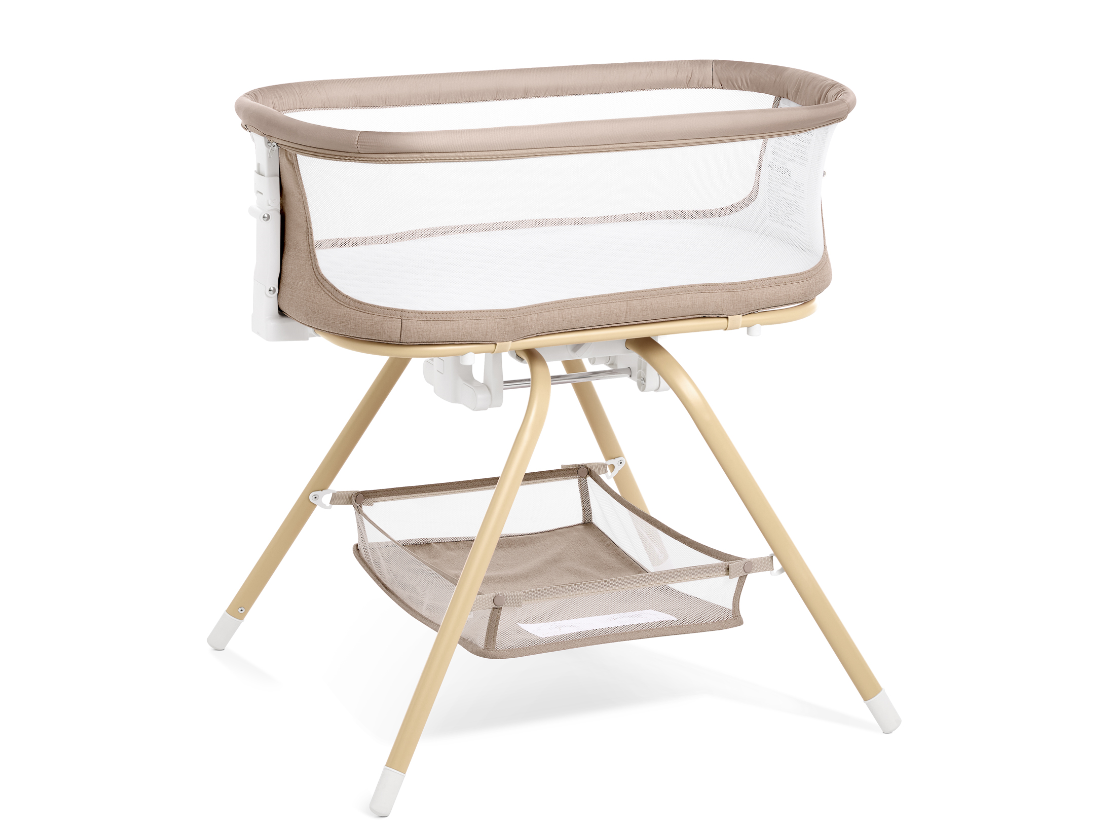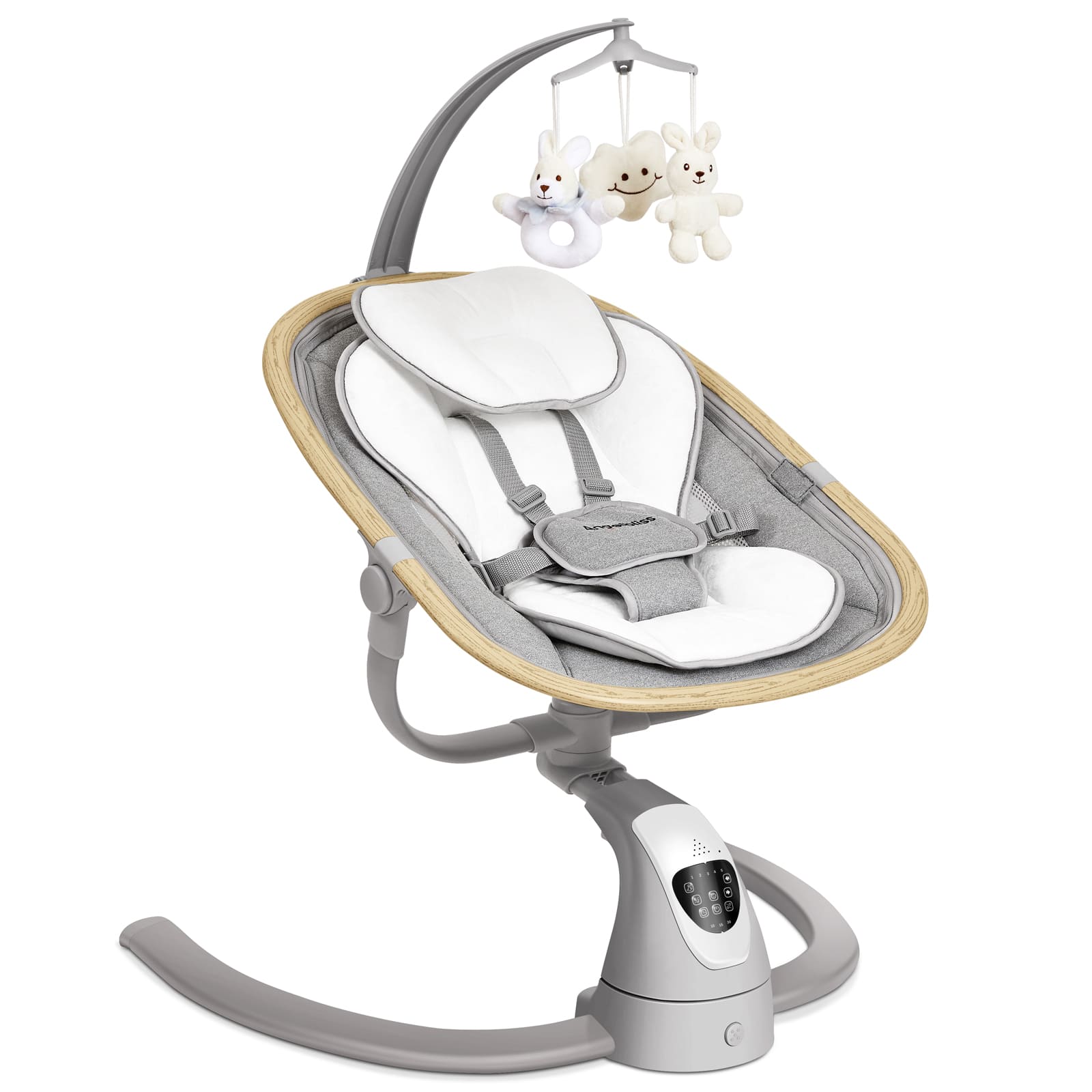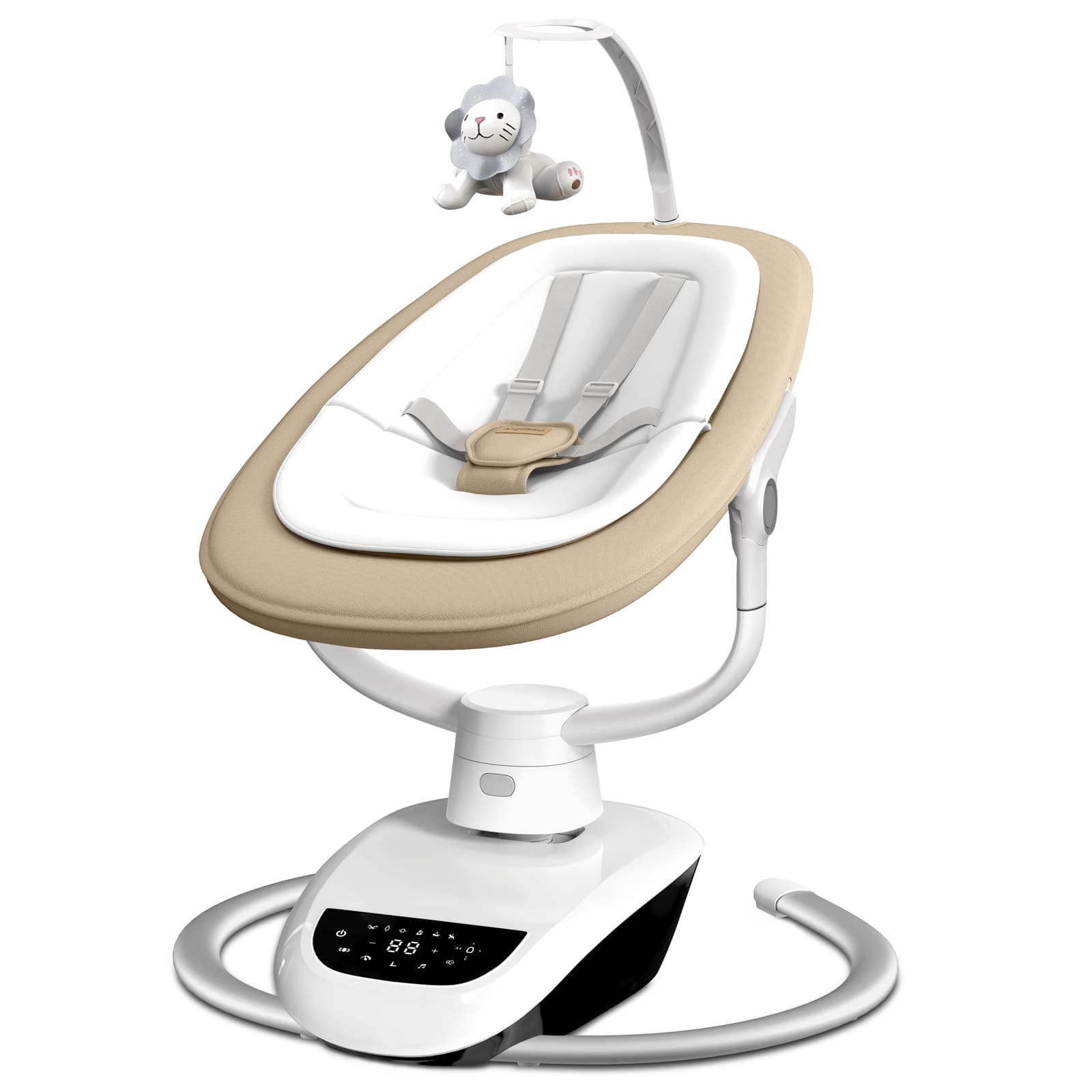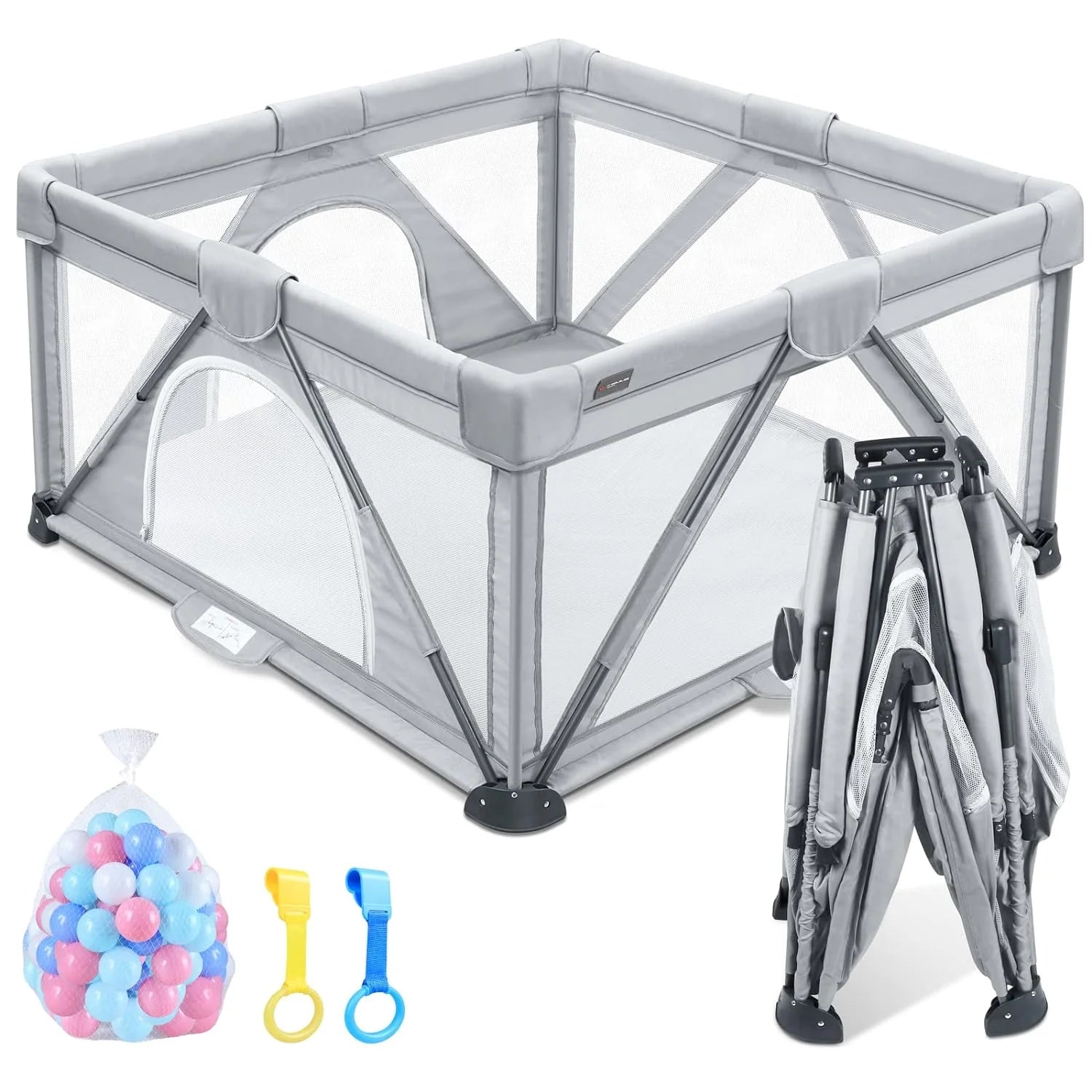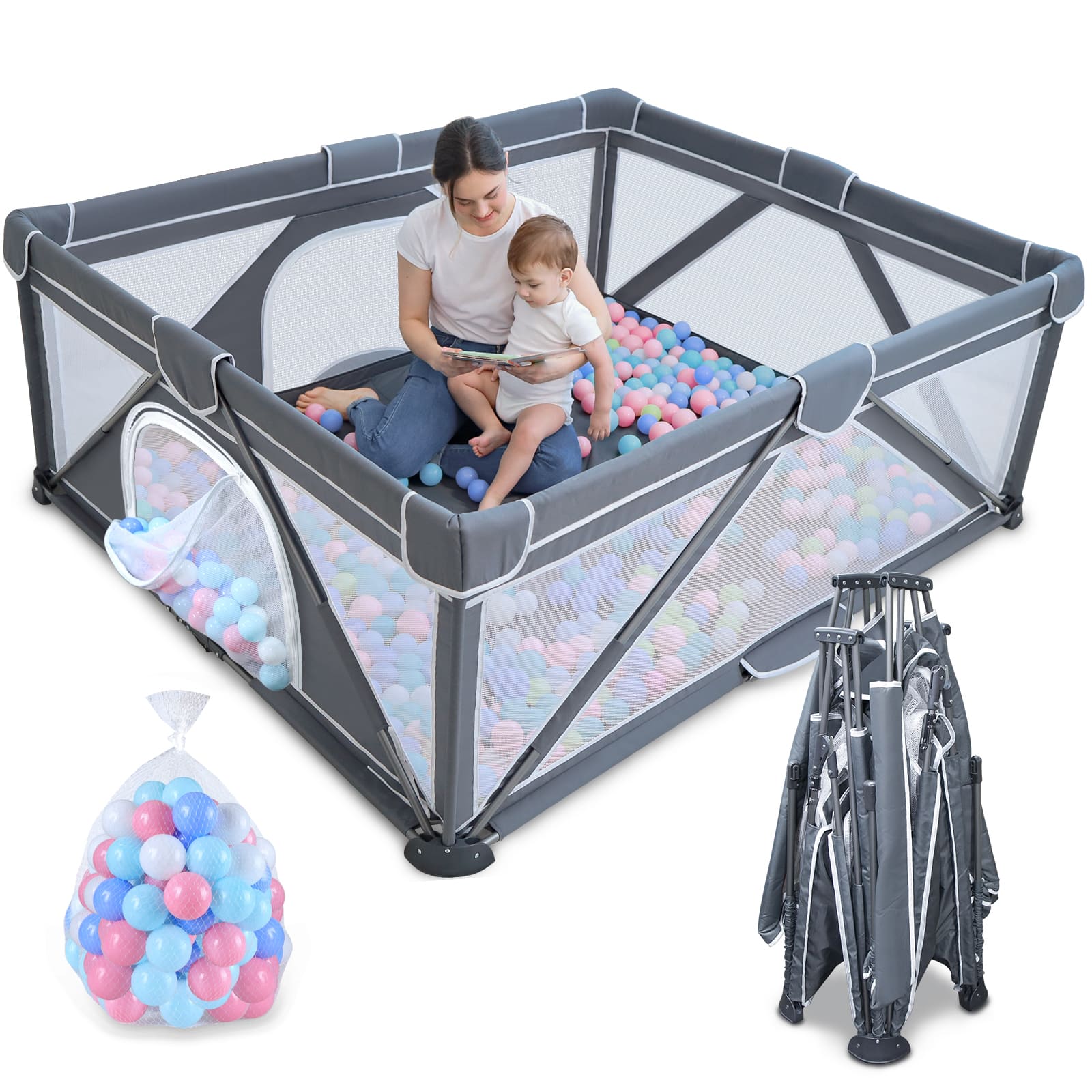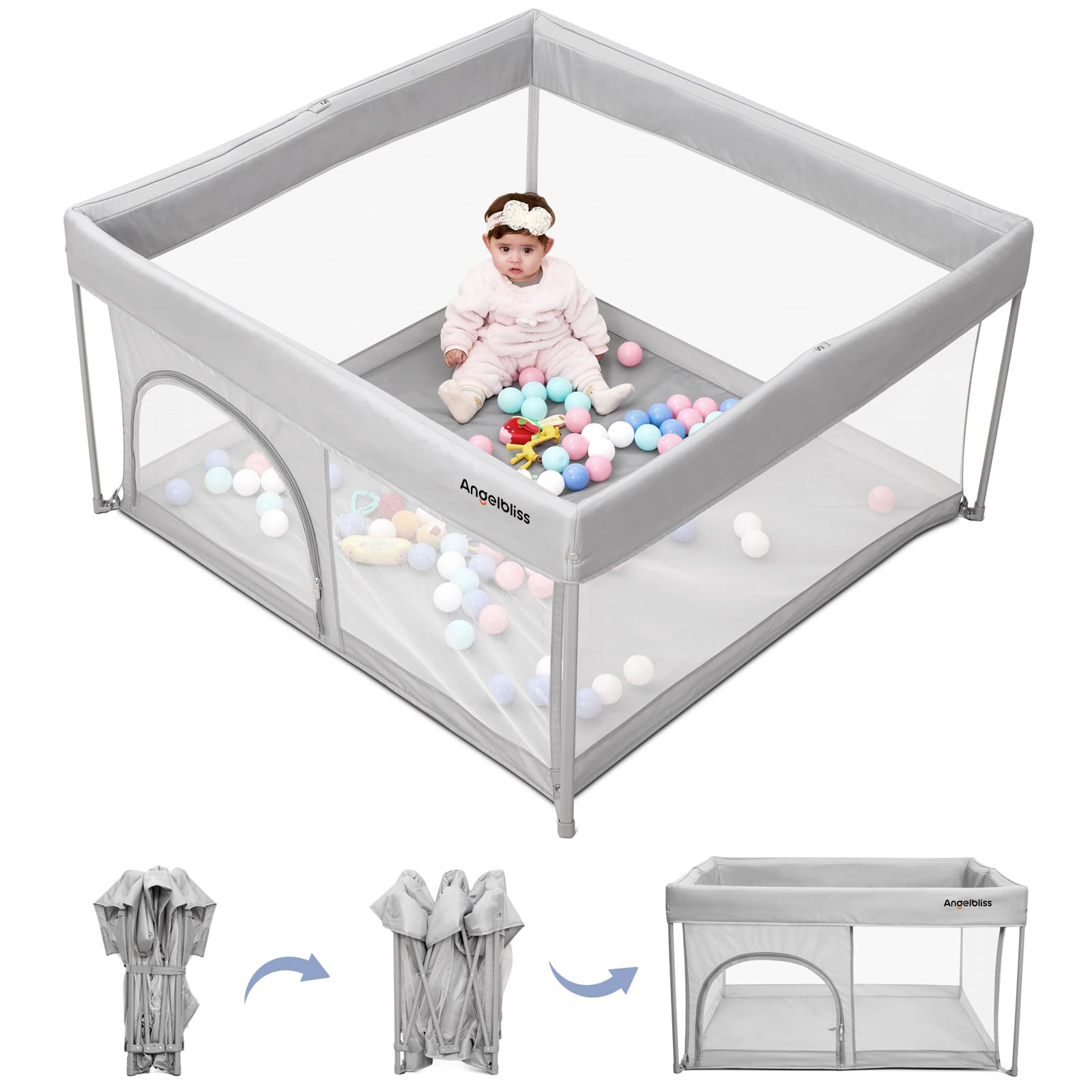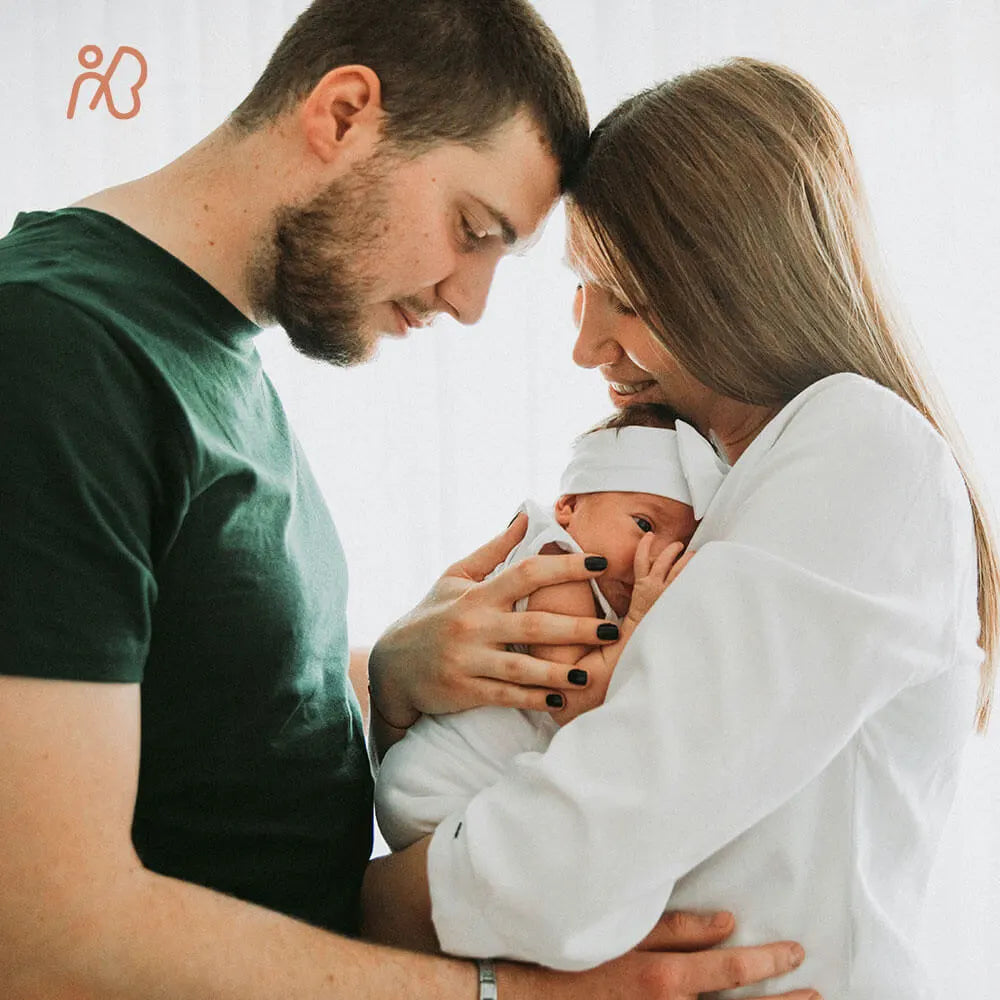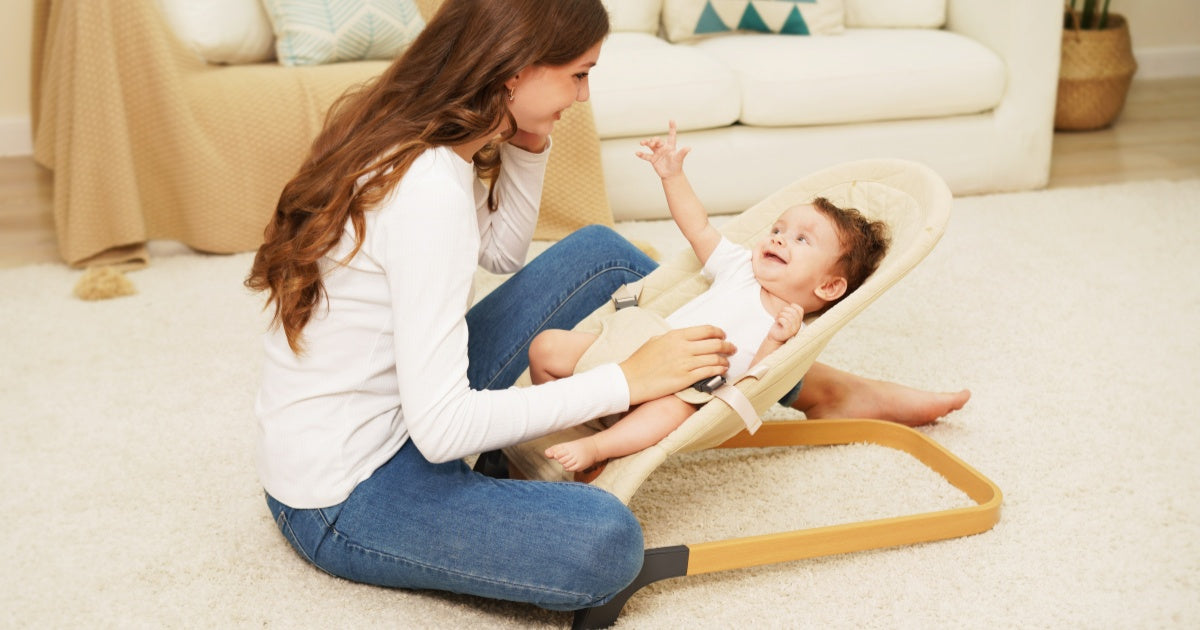We've all been there: your baby is fussy, you're exhausted, and then you discover the magic of a baby swing. Almost immediately, that soft hum and that smooth motion can put your child to sleep. It feels like a godsend.
But here's the burning question every parent eventually asks: Can babies sleep in a swing?
The short, definitive answer is: No, babies should NOT sleep in a swing for unsupervised naps or overnight sleep.

1. Why Sleeping in a Swing is Not Safe for Babies
While swings can be a wonderful tool for soothing an awake baby, they are not designed for safe sleep. Here's why they pose significant risks when your baby drifts off:
1.1 Risk of Asphyxiation (Positional Asphyxia)
This is the primary and most concerning danger. In a swing, a baby's head can easily flop forward, causing their chin to press into their chest. Their airway may become blocked by this seemingly harmless posture, making breathing difficult or impossible. This risk is especially high for newborns and young infants who lack the neck control to lift their heads. Even if strapped in, gravity can pull them into this dangerous position.
1.2 Sudden Infant Death Syndrome (SIDS) risk
Baby swings do not meet the criteria for a safe sleep environment as recommended by leading health organizations. A safe sleep surface must be flat and firm. Swings, by nature, are inclined and often have soft, padded seats. This combination significantly increases the risk of SIDS, as soft surfaces and inclines are known risk factors.
1.3 Risk of Falls & Entrapment
As babies grow and become more mobile, the risks in a swing increase.
Falls: Even if securely strapped, a baby who can wiggle, scoot, or is approaching the swing's weight limit could potentially shift their position, causing the swing to tip or, in rare cases, even fall out if restraints are loose or fail.
Entrapment: There's a risk of a baby's limbs or head getting caught in gaps or against the swing's frame if they move into an unsafe position.
1.4 Risk of Over-Reliance & Developmental Delays
Beyond immediate safety risks, prolonged sleep in a swing can also hinder your baby's development.
Developmental Delays: Babies need plenty of time on a flat surface to develop core strength, practice tummy time, and learn to reach for toys. Too much time in a swing can limit these crucial developmental opportunities.
Sleep Dependence: Your baby might become overly reliant on the swing's motion to fall asleep, making it harder for them to learn independent sleep skills in a safe, stationary environment.

2. What the Experts Say: AAP Recommendations on Swings & Sleep
The leading expert on newborn health, the American Academy of Pediatrics (AAP), is quite clear about this:
Swings are NOT safe sleep spaces. They are designed for awake, supervised use, not for naps or overnight sleep.
Always transfer a sleeping baby from a swing, car seat, bouncer, or any other inclined device to a crib or bassinet that provides a flat, firm sleep surface.
The AAP consistently emphasizes its "Back to Sleep, Alone, on a Flat Firm Surface" guidelines as the cornerstone of SIDS prevention.
3. Safe Sleep Spaces: Where Your Baby Should Sleep
So, if not a swing, where should your baby sleep safely? The answer is simple and consistent:
3.1 The Crib
The most common and secure sleeping arrangement for infants from birth to toddlerhood is the traditional crib. It provides a spacious, sturdy, and safe environment for all sleep, day or night.

3.2 The Bassinet
A bassinet is a great option for the initial months. Its smaller size allows it to fit comfortably in your bedroom, making nighttime feedings and checks easier while keeping your baby in their own safe sleep space.
3.3 The Pack and Play / Portable Playard
A versatile and safe option, a Pack and Play (or portable playard) can serve as both a secure play area and a safe sleep space. Many come with a bassinet insert for newborns and can be used as a sleep spot as your baby grows. They are particularly convenient for travel or safe naps in different rooms.
The absolute key takeaway for all these options: They offer a flat, firm, bare sleep surface – no exceptions.
4. How to Use a Baby Swing Safely (When Baby is Awake & Supervised)
While not for sleep, baby swings can be wonderful tools for soothing and entertaining your baby when used correctly and safely.
Always supervise: Never, ever leave your baby unattended in a swing. Your eyes should always be on them.
Use Straps Correctly: Always secure your baby with the swing's harness or straps. Make sure the buckle is fully engaged and that they are snug but not too tight.
Follow Weight & Age Limits: Adhere strictly to the manufacturer's specified weight, height, and age limits. Once your baby hits the max, it’s time to stop using the swing.
Limit Time: Usually, you should only spend 20 to 30 minutes at a time swinging. It's for entertainment and soothing, not extended stays.
Flat Surface Only: Always place the swing on a flat, level floor. Never place it on a high surface where it could topple over or fall, such as a table or counter.
Avoid Sleep Induction: Try to use the swing when your baby is awake and alert. If they become drowsy or fall asleep, immediately transfer them to a safe, flat sleep surface.
Prioritizing Your Baby's Safety
Baby swings can be a fantastic tool for providing comfort and entertainment during your baby's awake hours. However, when it comes to sleep, whether it's a short nap or overnight, the risks associated with swings are clear and serious. Prioritizing your baby's safety means consistently choosing a flat, firm, and bare sleep surface in a crib, bassinet, or Pack and Play.
Making these informed choices about safe sleep will not only protect your precious little one but also bring invaluable peace of mind to you as a parent.

